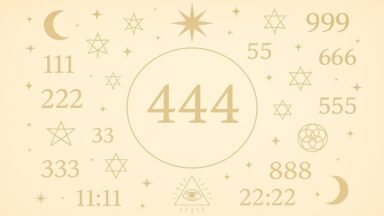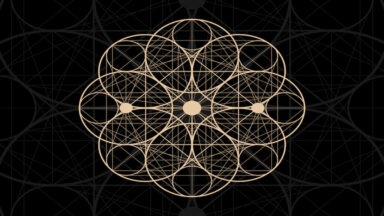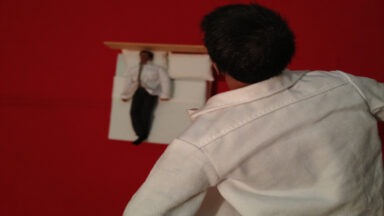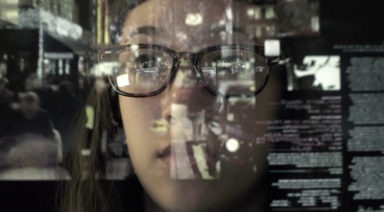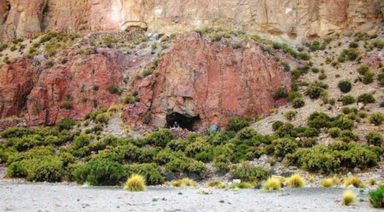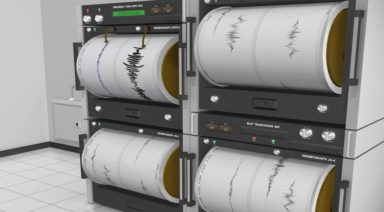Sound Shows Evidence of a Hidden Structure Throughout Universe
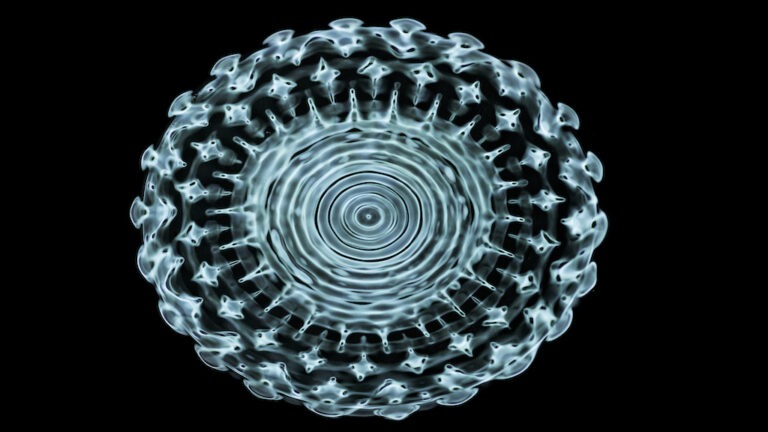
Sound is a powerful force, and as humans, we know this intuitively from the day we’re born. Even for those born deaf, sound can be felt physically, such that it can still evoke a response.
When we think about sound at its most basic definition, it seems relatively simple — acoustic vibrations resonating as waves through some medium. But the way sound makes us feel is more complex, nuanced, and often ineffable.
Sound can elicit chemical changes in our brain and take us into transcendent states of euphoria; it alerts us to impending dangers or opportunities in our environment; it can distract or focus our minds on a task at hand, and it can even drive us to the brink of insanity if used nefariously.
Sound is also one of the major tools we use to manifest material reality and bring our ideas to fruition — in fact, verbal communication is like magic when you consider the impact it can have on others.
The etymology of every magician’s favorite utterance, “abracadabra,” is ambiguous and contested, but many believe its roots come from ancient Hebrew or Aramaic where it means, “I will create as I speak,” or “I create like the word.”
In nearly every religion, the origin story of the universe begins with sound. In Eastern philosophy, “aum” was the primordial reverberation that sparked existence; in Christianity, God spoke the universe into existence; in Jewish mysticism, creation texts like the Sefer Yetzirah, stress the significance of specific Hebrew letters and powerful root words used to create the universe.
And beyond contemporary religion, this concept of a “sound of creation” was even taught in ancient Egyptian schools with Ptah, the god who gave life to all through his heart and tongue.
When we consider the physics of sound, these creation stories actually make a lot of sense, as sound and matter are intrinsically connected. Because sound is unable to travel through the vacuum of space, some physical medium is necessary to not just generate it, but to propagate its waves — whether that be a solid, liquid, gas, or plasma.
This underlying connection between sound and vibration, the fundamental elements, and the architecture of the universe has been pondered for time immemorial. In modern esotericism, the Platonic solids are the best example of this, stemming from Plato’s idea of an unseen blueprint existing throughout the universe that dictates the structure of physical reality. The Platonic solids are commonly recognized today and are essential figures in what we call sacred geometry.
The ancient Greeks conceived of these solids, though they weren’t the first — stones carved in similar shapes were found in Scotland 1,000 years prior – and let’s be honest, ancient Hindu yantras clearly depict the same concept. So, no matter who we give credit to, this is clearly archetypal knowledge (read gnosis) conceived by numerous cultures.
Essentially, the idea is to consider our universe as you would a circle or sphere, where every point is equidistant from the center, or source. Within that circle, there can then be continued polygonal divisions — the tetrahedron, cube, octahedron, dodecahedron, icosahedron, and so forth. These divisions, on a cosmic scale, are tantamount to the various vibrations (sonic, frequential, or energetic) within our universal plane that create the fundamental elements and their permutations.
If we jump ahead a millennia or so from the Greek thinkers, we begin to see the Renaissance intelligentsia philosophizing over these connections. Polymaths like Da Vinci, physicists like Galileo, and the more obscure English scientist Robert Hooke started making astute observations about our physical reality in terms of resonance, wavelengths, and the possibility of visualizing sound — all of which laid the groundwork for the revolutionary study of cymatics.
By taking a glass plate, covering it in lycopodium powder, and running a bow along its edge, Hooke was amazed when he observed specific patterns spontaneously appear. Soon after, German musician and physicist Ernst Chladni repeated Hooke’s experiments and documented them further, giving the various arrangements their eponymous name — Chladni Figures.
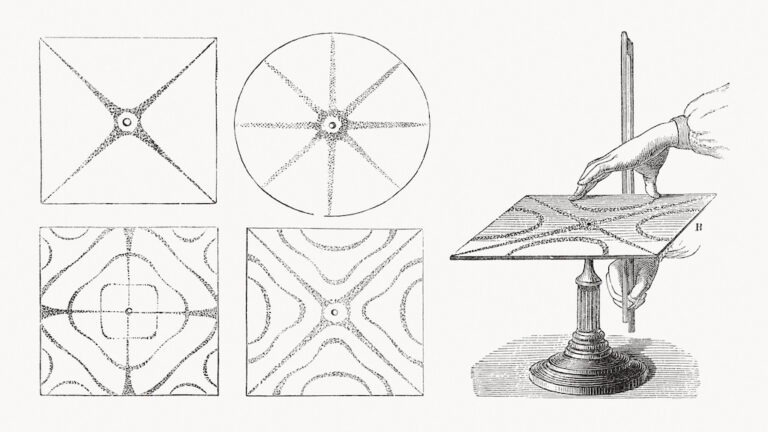
Ernst Chladni’s method of creating Chladni figures.
But these incredibly symmetrical figures weren’t just aesthetically pleasing… a century later they would provide a crucial hint to the father of quantum physics, Erwin Schrödinger, as he was working out the fundamentals of quantum mechanics. The nodal patterns depicted by the Chladni figures were found to be relevant to Schrödinger’s equation in one-electron atoms, while he was conceiving electron orbital patterns. Suddenly, the underlying connection between sound, vibration, and matter came clearer into focus through the lens of materialist science.
Soon thereafter, a Swiss scientist at the Rudolf Steiner School in Zürich picked up where his acoustic predecessors left off and coined the fascinating study “cymatics.” Equipped with modern technology, Hans Jenny discovered an incredible range of Chladni figures he could produce through crystal oscillators and sonorous devices that ran the gamut of ultra-low to ultra-high-frequency sound.
Today, the science of cymatics is more exciting than ever, as practical applications in medicine may prove it a useful tool for advanced medical procedures. Researchers are using cymatics to image cancer cells against healthy ones, in order to enhance the efficacy of targeted surgery. Meanwhile, other scientists are using sound to literally regrow human bone and other tissues.
As we continue these studies and explore the incredible possibilities sound has to heal, we realize how foundational it is in every facet of our existence. Could it also be the key to our transcendence?
To learn more, watch the all-new Gaia original series, “Sound of Creation.”
What Does 444 Mean? An Invitation to Organize Your Inner World
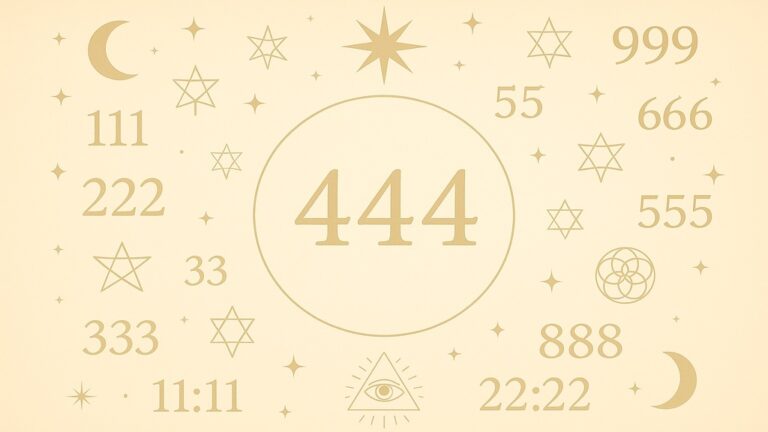
If you’ve started seeing the number 444 constantly, it’s not something you should ignore. This numerical sequence appears as a sign to pause and observe how you are building your reality. It’s a key moment to strengthen your inner foundation and organize what sustains you. In this article, we explore what 444 means, why it keeps showing up, and how you can interpret it as a message of protection, order, and inner stability.
Table of Contents
- What Does It Mean to See 444 Repeatedly?
- The Deeper Spiritual Meaning of 444
- 444 as an Angel Number: Connection With Your Spiritual Guides
- 444 in Love: Balance and Soul Connection
- What to Do When 444 Appears in Your Life
- Other Numbers That Often Accompany 444
What Does It Mean to See 444 Repeatedly?
Seeing 444 repeatedly is not a coincidence. This number comes as a reminder that you have a spiritual support structure sustaining you through your process. Even if you don’t yet have all the answers, its message is clear: you are moving forward on solid ground and can trust the path you’re on.
Additionally, encountering this sequence in different contexts may invite you to reevaluate your priorities. 444 urges you to reaffirm your decisions, organize your inner world, and act with greater coherence. Its constant presence is a reminder that every small step counts, and your stability depends on the order you cultivate within.
The Deeper Spiritual Meaning of 444
444 carries a spiritual meaning associated with protection, structure, and trust. This number appears when it’s time to put your thoughts, emotions, and actions in order. It invites you to reconnect with what is essential and to build from a more solid place.
On a deeper level, its presence suggests that you are entering a phase where you need clarity, focus, and inner discipline. It’s a sign that you’re surrounded by an energy that guides you to make firm decisions, set clear boundaries, and move forward with more confidence.
In the series Mystery Teachings, available on Gaia, these number patterns are explored as languages that reveal invisible connections between your daily life and universal energies. There you can dive deeper into how sequences like 444 can become practical guides for navigating the changes and opportunities appearing in your life.
444 as an Angel Number: Connection With Your Spiritual Guides
444 is considered an angel number because it appears as a reminder that you are not alone. Its frequent presence indicates that you have the support of your spiritual guides, who are accompanying you in the process of organizing your life and building on solid foundations. This sequence shows up during moments when you need clarity, support, and a more defined direction.
When 444 appears, it is a sign to open your perception to the subtle guidance that is already surrounding you. This presence may manifest through dreams, signs, or intuitions that confirm you are not walking this path without help. Recognizing this spiritual companionship can bring you peace and help you make decisions with greater confidence.
Moreover, 444 represents the balance between the material and the spiritual. Its message reminds you that what you think, feel, and do should be aligned with a deeper purpose. Your guides are collaborating with you so that this purpose can take tangible form, helping you bring order to your life from the inside out.
444 in Love: Balance and Soul Connection
When 444 appears in matters of love, its message is to strengthen the structure of your relationships. This number represents harmony, trust, and commitment, and reminds you that authentic relationships are built on solid foundations—not on urgency or emotional confusion.
It may also indicate that you are entering a stage of deeper connection with someone who resonates with your path. Whether you’re getting to know someone new or deepening an existing relationship, 444 invites you to value emotional stability and energetic balance within the bond.
At the same time, this number encourages you to pause and observe how you are holding your emotional space in the relationship. Are you respecting your own boundaries? Are you giving from a place of balance? 444 urges you to bring order to your emotional world so that love can flourish from a conscious and genuine place.

What to Do When 444 Appears in Your Life
When 444 shows up repeatedly, the first thing you can do is pause and observe how you feel in that moment. Ask yourself whether you’re listening to your intuition or if there’s something inside you that needs to be realigned. This sequence is an invitation to take a moment of stillness to reconnect with your purpose and your true priorities.
Keeping a record of the times when 444 appears can also be very helpful. Writing down in a notebook or journal when this sign shows up, the context, and what emotions you feel will help you identify patterns and better understand the message it brings to you. Over time, you’ll discover that this number acts like a mirror reflecting the inner changes you are experiencing.
It’s also important to stay open to the guidance that 444 brings. Practicing meditation or simply dedicating a moment to inner silence can help you receive clarity and confidence in your next steps. Remember that 444 doesn’t arrive to tell you what to do, but to remind you that you are being supported and that every decision matters on your path.
Other Numbers That Often Accompany 444
444 often appears alongside other number sequences that amplify or complement its message. These combinations are part of a symbolic language the universe uses to guide you and help you understand the moment you’re living through.
- 11:11: Spiritual awakening: This number signals that you are in an energetic portal that propels you to raise your consciousness. It’s a reminder that you are ready to align with your deepest purpose.
- 22:22: Manifestation and balance: Represents the ideal moment to act with confidence and coherence. It’s a confirmation that what you think and what you do are taking shape in your life.
- 1234: Progressive advancement: Indicates that you are moving step by step toward a greater goal. This number reflects that every small effort is contributing to significant change.
- 111: Intention and creation: Indicates that your thoughts are creating your reality and that you need to pay attention to what you are manifesting. It’s a call to align your mind with your most authentic desires.
- 222: Harmony and trust: Symbolizes the importance of staying calm and trusting the process you’re going through. It reinforces the need to find balance between what you desire and what you are manifesting.
- 333: Spiritual expansion: Shows that you are in a moment of inner growth and that your guides are near. It’s a push to express your truth with authenticity and courage.
- 555: Transformation and change: Indicates that a period of deep transformation is approaching. This number encourages you to let go of what no longer serves you so you can receive the new with more strength.



